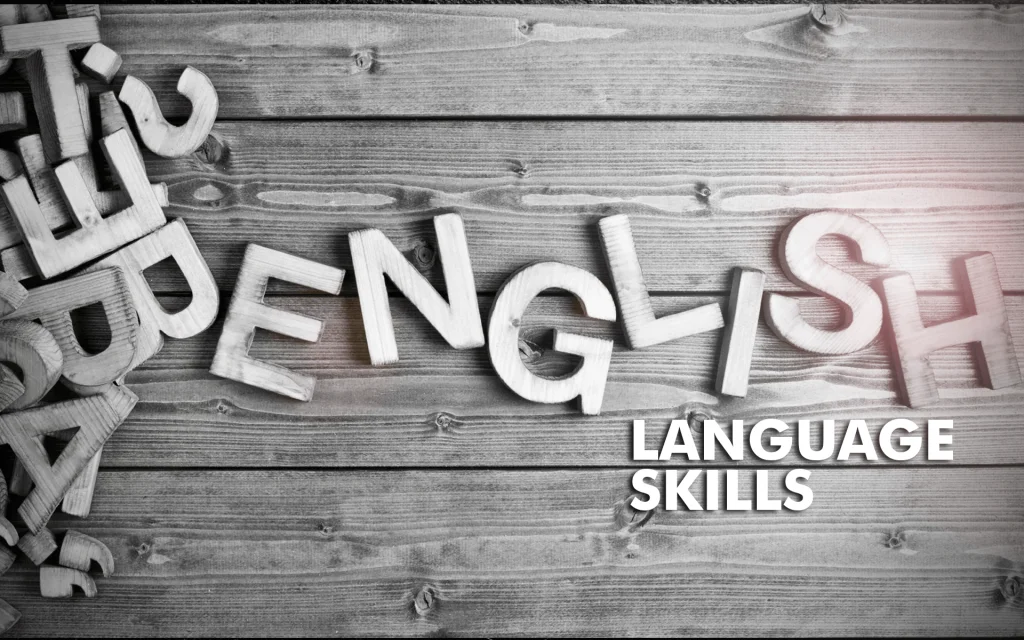Understanding Content Creation

Content creation is the process of crafting valuable and engaging material for your audience. Whether you’re a blogger, vlogger, podcaster, or social media enthusiast, creating content involves several key aspects:
Purpose and Audience:
- Know Your Why: Understand why you want to create content. Is it to educate, entertain, inspire, or promote a product?
- Audience Persona: Define your target audience. What are their interests, pain points, and preferences?
Types of Content:
- Blog Posts: Written articles on specific topics.
- Videos: Visual content for platforms like YouTube or TikTok.
- Podcasts: Audio content for listeners.
- Infographics: Visual representations of data or concepts.
Content Creation Process:
- Ideation: Brainstorm topics related to your niche.
- Research: Validate your ideas using tools like Google Trends or keyword research.
- Planning: Create a content calendar and set deadlines.
- Creation: Write, record, or design your content.
- Editing: Polish your work for clarity and coherence.
- Publishing: Share your content on relevant platforms.
Quality vs. Quantity:
- Quality Matters: Focus on creating high-quality content. It’s better to publish less frequently but maintain excellence.
- Consistency: Stick to a regular posting schedule.
Promotion and Engagement:
- Social Media: Share your content across platforms.
- Collaborate: Partner with other creators.
- Engage: Respond to comments and build a community.
Find Proven Topics for Content Creation

Audience Research
Understanding your audience is crucial for successful content creation. Here’s how to do it effectively:
Know Your Audience:
- Who Are They? Define your target audience. Consider demographics (age, gender, location), interests, and behaviors.
- Pain Points: Identify the challenges or problems your audience faces. What solutions are they seeking?
- Preferences: Understand their content consumption habits. Do they prefer written articles, videos, or podcasts?
Tools for Audience Research:
- Google Trends: Explore trending topics and search queries. It helps you stay up-to-date.
- Social Media Analytics: Analyze data from platforms like Instagram, Twitter, and Facebook. Look at engagement metrics, follower demographics, and popular content.
- Keyword Research Tools: Use tools like Ahrefs, SEMrush, or Moz to find relevant keywords related to your niche.
Trending Topics:
- Stay Current: Regularly check industry news, blogs, and social media for emerging trends.
- Seasonal Content: Create content around holidays, seasons, or events relevant to your audience.
Brainstorming Ideas for Content Creation
Passion and Knowledge:
- Identify Your Interests: Reflect on what excites you. Passionate creators produce their best work when they genuinely care about the subject matter.
- Leverage Your Expertise: Consider your skills, experiences, and knowledge. What unique insights can you share with your audience?
Evergreen Topics:
- What Are Evergreen Topics? These are timeless subjects that remain relevant regardless of trends or seasons.
- Examples:
- “Effective Time Management Techniques”
- “Healthy Eating Habits”
- “Financial Planning for Beginners”
Trending Subjects:
- Stay Current: Keep an eye on industry news, social media, and popular culture.
- Explore Trends:
- Hashtags: Check trending hashtags on platforms like Twitter and Instagram.
- Google Trends: Discover what people are searching for globally or locally.
- Seasonal Trends: Adapt your content to holidays, seasons, or events.
Topic Validation
When choosing topics for your content, it’s essential to validate them to ensure they resonate with your audience. Here’s how:
Search Demand and Relevance:
- Keyword Research: Use tools like Google Keyword Planner, Ahrefs, or SEMrush to find relevant keywords related to your topic.
- Search Volume: Check if there’s sufficient search demand for your chosen keywords. High search volume indicates interest.
- Long-Tail Keywords: Consider using specific, long-tail keywords that address niche queries.
Competitor Analysis:
- Analyze Competitors: Look at what other content creators in your niche are producing.
- Successful Content: Identify topics that perform well for your competitors. What types of content (blog posts, videos, etc.) are getting engagement?
- Content Gap: Find gaps—topics that haven’t been covered extensively or need a fresh perspective.
Blog Posts
Blog posts are a versatile and widely used form of content. Here’s what you need to know:
Purpose and Benefits:
- Informative: Blog posts educate readers on specific topics.
- Engagement: They encourage interaction through comments and discussions.
- SEO Boost: Well-optimized blog posts can improve your website’s search engine rankings.
Types of Blog Posts:
- How-To Guides: Step-by-step instructions for solving a problem.
- Listicles: Curated lists (e.g., “10 Tips for Better Sleep”).
- Opinion Pieces: Share your thoughts on industry trends or news.
- Case Studies: Analyze real-world scenarios.
- Interviews: Conversations with experts or influencers.
Structure:
- Title: Catchy and relevant.
- Introduction: Hook readers and introduce the topic.
- Body: Organize content into sections or paragraphs.
- Conclusion: Summarize key points and encourage action (e.g., subscribing or sharing).
Writing Style:
- Conversational: Write as if you’re talking to a friend.
- Clear and Concise: Avoid jargon and complex sentences.
- Visuals: Include images, infographics, or videos.
Videos
YouTube Tutorials
- Purpose: YouTube tutorials are educational videos that teach viewers how to perform specific tasks or acquire new skills.
- Format:
- Length: Varies (usually 5–20 minutes).
- Structure:
- Introduction: Briefly introduce the topic.
- Step-by-Step Demonstration: Show each step clearly.
- Conclusion: Recap and encourage viewers to subscribe or comment.
- Tips:
- Engage: Be enthusiastic and relatable.
- Visuals: Use screen recordings, graphics, and annotations.
- SEO: Optimize video titles, descriptions, and tags.
Vlogs
- Purpose: Vlogs (video blogs) provide a glimpse into someone’s life or experiences.
- Format:
- Style: Casual, personal, and authentic.
- Content: Share daily routines, travel adventures, or behind-the-scenes moments.
- Editing: Keep it engaging but not overly polished.
- Tips:
- Storytelling: Narrate your experiences.
- Consistency: Regularly upload vlogs.
- Thumbnail: Eye-catching visuals for click-through.
Explainer Videos
- Purpose: Explainer videos simplify complex concepts or products.
- Format:
- Length: Typically 1–3 minutes.
- Script: Precise and concise.
- Animation/Graphics: Use visuals to enhance understanding.
- Tips:
- Problem-Solution: Clearly state the problem and how your solution helps.
- Call to Action: Encourage viewers to take the next step (e.g., sign up, or visit a website).
Podcasts
Interviews
- Purpose: Podcast interviews feature conversations with guests, experts, or influencers.
- Format:
- Host and Guest: The host invites a guest to discuss a specific topic.
- Preparation: Research the guest and prepare thoughtful questions.
- Engagement: Engage in a natural conversation.
- Tips:
- Diverse Guests: Invite people from various backgrounds.
- Active Listening: React to the guest’s responses.
- Promotion: Promote the episode across platforms.
Storytelling
- Purpose: Storytelling podcasts captivate listeners with narratives.
- Format:
- Narrator: A host or multiple narrators share stories.
- Genres: Fiction, true crime, personal anecdotes, or historical accounts.
- Sound Effects: Use soundscapes to enhance the experience.
- Tips:
- Hooks: Start with an intriguing opening.
- Character Development: Create relatable characters.
- Emotion: Evoke feelings through storytelling.
Educational Content
- Purpose: Educational podcasts teach specific skills or provide in-depth knowledge.
- Format:
- Structured: Follow a clear outline or curriculum.
- Experts: Hosts share expertise on topics like science, history, or self-improvement.
- Q&A: Answer listener questions.
- Tips:
- Clarity: Explain complex concepts in simple terms.
- Consistency: Release episodes regularly.
- Community: Engage with listeners through social media.
Infographics
Infographics are powerful visual tools that convey complex information in a concise and engaging manner. Here’s what you need to know:
Purpose:
- Data Visualization: Infographics present data, statistics, or trends.
- Concept Explanation: Simplify intricate concepts or processes.
- Storytelling: Narrate a story visually.
Components:
- Visual Elements: Icons, charts, graphs, illustrations.
- Text: Brief, impactful captions.
- Color Scheme: Use colors strategically to enhance readability.
Types of Infographics:
- Statistical Infographics: Display data (e.g., bar charts, pie charts).
- Process Infographics: Step-by-step guides.
- Comparison Infographics: Compare two or more items.
- Timeline Infographics: Show events chronologically.
Design Tips:
- Clarity: Keep it simple and focused.
- Hierarchy: Arrange elements logically.
- Whitespace: Avoid clutter.
- Mobile-Friendly: Optimize for various devices.
Plan, Create, and Publish
Content Calendar: A Brief Overview
A content calendar, also known as an “editorial calendar,” is a written schedule that outlines when and where you plan to publish upcoming content. It serves as a roadmap for your content production, ensuring consistency, organization, and effective collaboration. Here are the key elements of a content calendar:
Editorial Content:
- This includes the pieces of content you’ll be publishing, whether on your blog, podcast, or social media channels.
- The main goal of your content calendar is to schedule your editorial pieces well in advance, allowing you to stay organized and maintain a consistent publishing schedule.
Why Are Content Calendars Important?
- Organization: A content calendar ensures that all content-related tasks happen as planned. It prevents things from falling through the cracks.
- Collaboration: If you work with a team or external contributors, a content calendar keeps everyone on the same page.
- Big Picture View: It provides an overview of your upcoming content, helping you avoid publishing similar topics too closely together.
Creating Your Content Calendar:
- Understand Your Goals: Define your content marketing objectives. What do you want to achieve with your content?
- Choose a Template: You can start with a simple Google Sheets template or explore more advanced tools.
- Select Your Channels: Decide where you’ll publish your content (blog, social media, etc.).
- Build Guidelines and Workflow: Establish guidelines for content creation, approval processes, and collaboration.
- Plan and Schedule: Map out your content topics, publication dates, and promotional activities.
- Monitor Results: Regularly review your calendar and adjust as needed based on performance.
Quality Matters: Why It’s Crucial for Content Creation
Less Is More:
- While quantity matters, quality should always take precedence. Publishing less frequently but maintaining high standards ensures that your audience receives valuable content.
- Tip: Focus on creating content that provides unique insights, solves problems, or entertains your readers.
Grammar and Clarity:
- Grammar: Poor grammar can undermine your credibility. Edit rigorously to eliminate errors.
- Clarity: Clear, concise writing helps readers understand your message. Avoid jargon and complex sentences.
Coherence and Flow:
- Ensure your content flows logically. Use transitions to connect ideas smoothly.
- Tip: Read your content aloud to identify any awkward phrasing or gaps in coherence.
Audience-Centric Approach:
- Understand your audience’s needs, preferences, and pain points. Tailor your content accordingly.
- Tip: Use storytelling techniques to engage readers emotionally.
Originality and Uniqueness:
- Plagiarism damages your reputation. Always credit sources and provide fresh perspectives.
- Tip: Use tools like Copyscape to check for duplicate content.
Visual Appeal:
- High-quality visuals (images, infographics, videos) enhance content. Invest time in creating or sourcing appealing visuals.
- Tip: Optimize images for the web to improve loading speed.
SEO Optimization:
- Well-structured, keyword-rich content ranks higher in search engines.
- Tip: Use tools like Yoast SEO to optimize your blog posts.
Content promotion and Distribution
Social Media Platforms:
- What Is It?: Social media content distribution involves sharing, publishing, and promoting your content across various social platforms.
- Why Is It Important?: Social media allows you to engage with your audience directly and amplify your reach.
- How to Do It:
- Create a Social Calendar: Plan when and what content you’ll share on each platform.
- Leverage Visuals: Use eye-catching images, videos, and infographics to enhance engagement.
- Engage with Followers: Respond to comments, ask questions, and encourage sharing.
Collaboration with Other Content Creators:
- What Is It?: Partnering with influencers, bloggers, or complementary brands to cross-promote content.
- Why Is It Important?: Collaborations introduce your content to new audiences.
- How to Do It:
- Identify Potential Partners: Look for creators with similar interests or overlapping audiences.
- Guest Posts and Interviews: Exchange guest posts or interview each other.
- Joint Webinars or Events: Host webinars or events together.
Email Newsletters:
- What Is It?: Sending regular newsletters to your subscribers with curated content.
- Why Is It Important?: Email newsletters provide a direct channel to engage your existing audience.
- How to Do It:
- Segment Your List: Tailor content based on subscriber preferences.
- Include Teasers: Share snippets of your latest blog posts or videos.
- CTAs and Social Sharing Buttons: Encourage readers to share your content.











